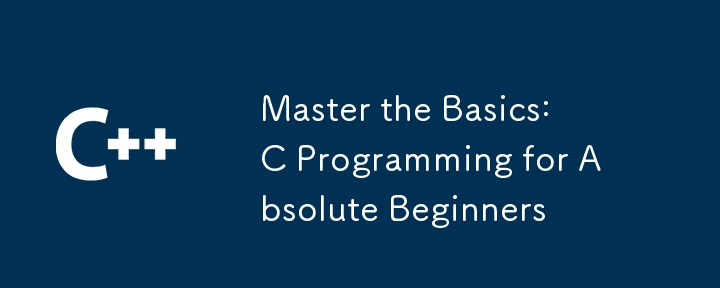
Introduction to C Language Beginner’s Guide 1. Install the C compiler: Use Visual Studio, Xcode, and GCC for Windows, Mac, and Linux respectively. 2. Hello World! Program: Create files and enter code, use the compiler to compile and run. 3. Variables and data types: Use variables to store information, including int, float, char, string and other data types. 4. Operators and expressions: Use operators to perform arithmetic and logical operations, and expressions combine operators, variables and constants. 5. Functions: Create reusable blocks of code that perform specific tasks and return values. 6. Array: A collection that stores elements of the same type and is accessed using subscripts. **7

Beginner’s Guide to C Programming
Introduction
C Language is a powerful general-purpose programming language known for its efficiency, portability, and low-level hardware control. It's an ideal choice for beginners looking to start programming or delve deeper into the fundamentals of computer science.
Install the C compiler
First, you need to install the C compiler for your operating system. For Windows, you can choose Microsoft Visual Studio Community Edition; for Mac, you can choose Xcode; for Linux, you can choose GCC.
Hello World! Program
Your first C program should be the classic "Hello World!" program. Create a file called helloworld.c and enter the following code:
#include <stdio.h>
int main() {
printf("Hello World!\n");
return 0;
}Compile and run the program
Compile and run the code using your installed C compiler . The command line steps are as follows:
gcc -o helloworld helloworld.c ./helloworld
The output should be: "Hello World!".
Variables and Data Types
Variables are used to store information. C language supports multiple data types, including int (integer), float (floating point number), char (character) and string.
int age = 25; float salary = 12000.50; char letter = 'A'; char name[] = "John Doe";
Operators and Expressions The
operators are used to perform arithmetic, logical and comparison operations on variables. Expressions combine operators with variables and constants.
age++; // 自增age
salary = salary * 1.10; // 增加salary 10%
if (letter == 'A') {
// 条件成立
}Function
A function is a reusable block of code that performs a specific task and returns a value.
int square(int number) {
return number * number;
}Array
An array is a collection of elements of the same type, accessed using subscripts.
int numbers[5] = {1, 2, 3, 4, 5};String
String is an array of characters used to store text.
char text[] = "This is a string.";
Practical case: Calculating the area of a circle
The following code uses C language to calculate the area of a circle:
#include <stdio.h>
#define PI 3.14159
int main() {
float radius;
float area;
printf("Enter the radius of the circle: ");
scanf("%f", &radius);
area = PI * radius * radius;
printf("Area of the circle: %.2f\n", area);
return 0;
}The above is the detailed content of Master the Basics: C Programming for Absolute Beginners. For more information, please follow other related articles on the PHP Chinese website!




